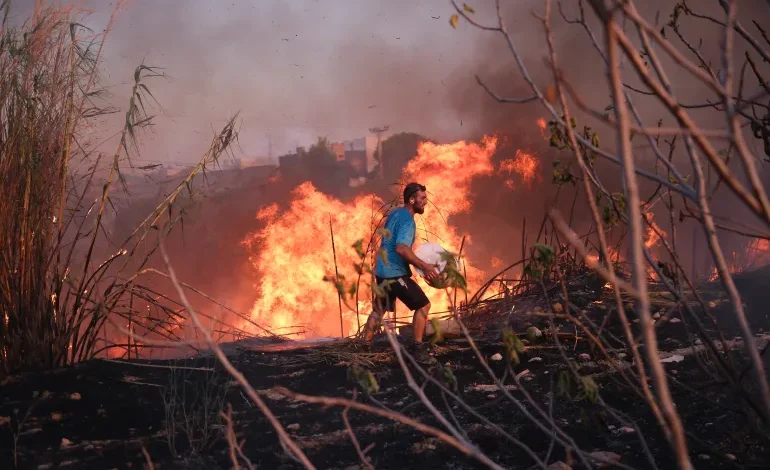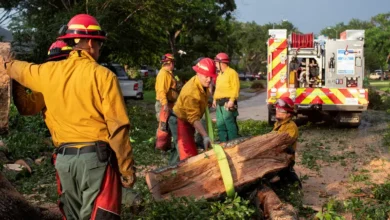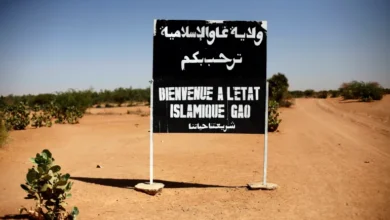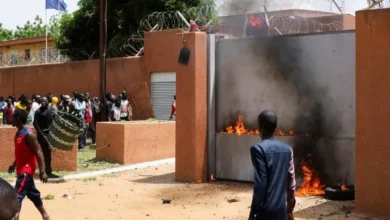How serious are the wildfires near Athens, Greece?

At least one person has died after one of Greece’s worst wildfires this year broke out on the outskirts of the capital, Athens, on Sunday. Authorities say the fires are now mostly under control with only a few “scattered hot spots”, but could spark up again later in the week.
In recent years, wildfires have become a common occurrence in summer for Greece as climate change has caused intense heatwaves and reduced rainfall in the Mediterranean country, creating ideal fire conditions.
According to the European Forest Fire Information System (EFFIS) and Greenpeace, 42,900 hectares (106,0000 acres) of land were burned by wildfires in Greece in 2023.
This figure is nearly double the area burned in 2022 and triple the amount in 2020.
Here’s what we know about the latest bout of wildfires in Greece:
Where did the wildfires start?
While the precise cause of the fires is unknown, the flames began on Sunday at 3pm local time (12:00 GMT) following a period of hot and dry weather near Varnavas, 35km (22 miles) north of the capital, Athens.
The wildfire spread through nearby pine forests, which had been rendered tinder-dry by the intense heat.
The flames, which had spread from the wooded, hilly area into the suburbs by Monday, triggered panic among residents who had not seen a wildfire this close to the capital in decades.
The affected areas typically have thousands of residents, but due to the fire happening at the height of the summer holiday season, it is unclear how many obeyed evacuation orders or stayed.
The wildfire revived memories of the deadly July 2018 fires in Mati, a seaside town near Marathon, in which 104 people died. The tragedy was later blamed on evacuation delays and errors.
How have the authorities reacted?
More than 560 firefighters, backed by volunteers, 17 water-bombing planes and 15 helicopters, started trying to extinguish the flames on Sunday.
The fire spread quickly, however, and by Monday morning had reached the village of Grammatiko, the ancient town of Marathon, the seaside municipality of Nea Makri, and Mount Pentelicus just north of Athens.
By Monday afternoon, three hospitals, including a children’s hospital, two monasteries and a children’s home, had been evacuated, and at least 30 mobile push alerts were sent to residents in the affected regions to warn them to flee the areas affected by the fire.
On Monday, Greek police said they had helped evacuate more than 250 people in affected areas.
How far have the fires spread since then?
The fire has now spread across neighbourhoods on the outskirts of the capital and close to it and has badly hit the suburbs of Nea Penteli, Palaia Penteli, Patima Chalandri and Vrilissia.
Greece’s National Observatory said satellite images showed the fire had damaged around 10,000 hectares (24,700 acres) of land.
Local newspaper Proto Thema also said that the fire had damaged 100 homes so far.
Have there been any casualties or injuries?
In the suburb of Vrilissia, firefighters found the burned body of a 64-year-old woman in a factory building just after midnight.
The woman is believed to have been an employee who became trapped inside the area after evacuation orders were issued.
The fire department said more than a dozen people were treated by paramedics, mostly for smoke inhalation. Five firefighters suffered light burns and breathing problems.
What damage have the fires caused?
Local media reported as many as 100 homes suffering damage.
Sakis Morfis, 70, a Vrilissia resident, told the Reuters news agency that his house was “utterly destroyed”.










